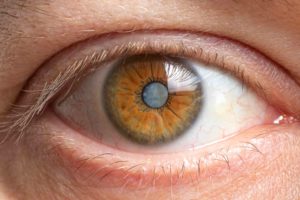
People with cataracts often have problems seeing, especially at night. This is because the light entering the eye is distorted and can cause the vision to blur. If the condition is not treated early, it can progress and lead to blindness. Fortunately, there are several steps that can be taken to prevent cataracts and reduce the risks associated with the condition. If you are experiencing any of the symptoms listed above, contact your eye care provider. If the symptoms persist, you may need to undergo a thorough eye exam.
If you experience cloudy, blurred vision, you may have cataracts. You may notice double vision or have difficulty focusing. In this case, you might not be able to see clearly. This can cause falls and balance problems and make it risky to drive. Other symptoms of cataracts include changes in color vision. Some objects may appear faded and purples and blues may have a brownish tint, which makes it difficult to distinguish.
A doctor will test for cataracts using a specialized ophthalmology tool called a slit-lamp. This will determine if the lens is cloudy. A cloudy lens can interfere with your vision, making it difficult to read, drive, or see clearly in dim lighting. The condition may also cause an increased sensitivity to light and make it difficult to drive, which is especially dangerous at night. If your symptoms change rapidly, you should schedule an appointment with your eye care provider. It is best to seek treatment early, as the disease is treatable.
Another symptom of cataracts is diplopia. This is caused by a cloudy lens. This type of vision affects color and contrast, and can be difficult to spot in close up situations or in bright light. You may notice halos around lights or a brownish tinge to objects when viewed through one eye. You may have trouble reading at night and seeing faces. A person with cataracts may not be able to focus on things clearly or drive at night, so if you think you have one, it is time to get a checkup.

There are other symptoms of cataracts that can be confused with other diseases. In addition to blurry and blurry vision, patients with cataracts may experience double vision. This can lead to balance problems and falls, and can also affect vision in bright light. Some people with this condition may also experience blurred vision. This makes it difficult to recognize people and objects. In some cases, the eye may even become so heavy that it interferes with daily activities.
Other cataract symptoms may be more severe than others. While some people experience vision problems associated with this condition, others will only be able to notice them after a doctor examines their eyes. This can lead to a host of other conditions, including glare, headaches, and strabismus. If a person experiences these symptoms, it is best to consult a doctor or health website https://ihealzy.com/ to avoid complications. This disease can be debilitating and can lead to blindness.
Other common signs of cataracts include glare from lights, blurry vision, and decreased color vision. Most patients don’t feel pain when they have a cataract, but they may require additional lighting to read or drive at night. In some cases, these symptoms may indicate an underlying problem that is more serious than it appears. Depending on the underlying cause, you may have a cataract, but it’s not as bad as you might think.
Symptoms of cataracts include double vision and glare from lights. You might also experience a sudden increase in sensitivity to light or need to wear glasses. Your vision may also change over time, making it difficult to see in dim light or read in the dark. In most cases, there are no symptoms, but they are common and are a sign of the disease. A professional can help you diagnose the condition and plan for surgery.
Symptoms of cataracts can include cloudy or blurred vision. Some people may have double vision, or "diplopia," which is when one or both eyes appear to be different colors. This can be a very worrying symptom as it could lead to a fall, as it can lead to confusion. A doctor can assess the condition with a thorough examination. This will allow you to determine if a cataract is the cause of your problems.